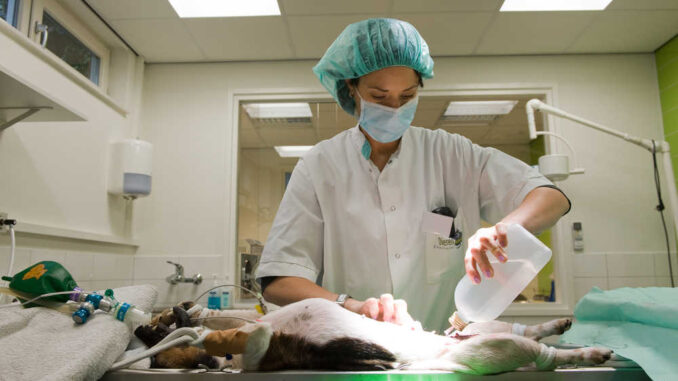
This article was updated on May 30th, 2023
Incision infections can occur in dogs after surgery, just as they can in humans. Infections can develop when bacteria enter the incision site, causing inflammation and potentially more serious complications. In this article, we will review what normal and infected incisions look like, most common signs of infection, and how to treat incision infections in dogs.
What normal incisions look like in dogs
Before we delve into what unhealthy incisions look like in dogs, let’s explore what a normal incision should look like.
The appearance of a surgical incision on a dog can vary depending on the type of surgery and the surgeon’s technique. However, a typical surgical incision on a dog is usually a straight line, made with a scalpel or surgical instrument, and may range in length from a few centimeters to several inches.
The incision site will be shaved and cleaned before surgery, so the skin around the incision will be hairless and smooth. The skin may appear slightly red or swollen immediately after surgery, which is normal. Over time, the incision will heal and may form a small scar.
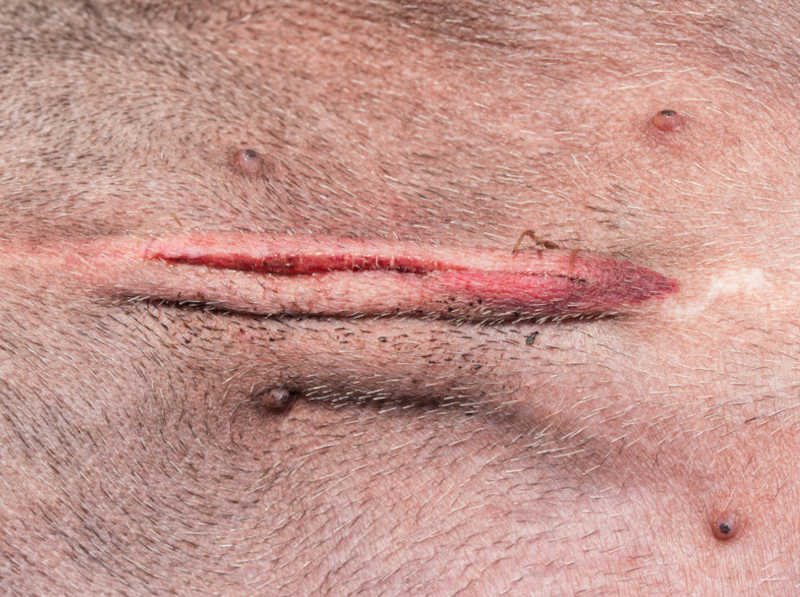
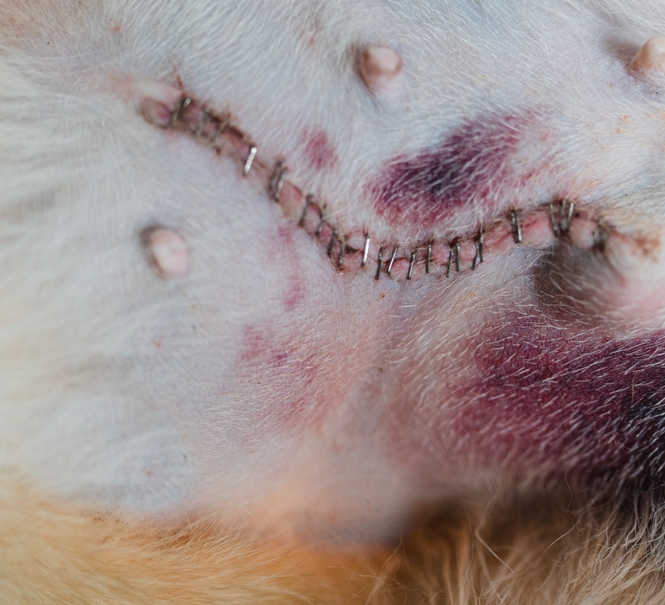
View more pictures of normal incisions.
What an incision infection looks like in dogs
Almost all incisional infections are self-inflicted in dogs. Dogs simply do not know that they should not lick their incisions, and thus are likely to chew and irritate the wound. If unable to lick or chew, they may rub it on the floor instead. This can lead to the incision failing to heal and secondary infection.
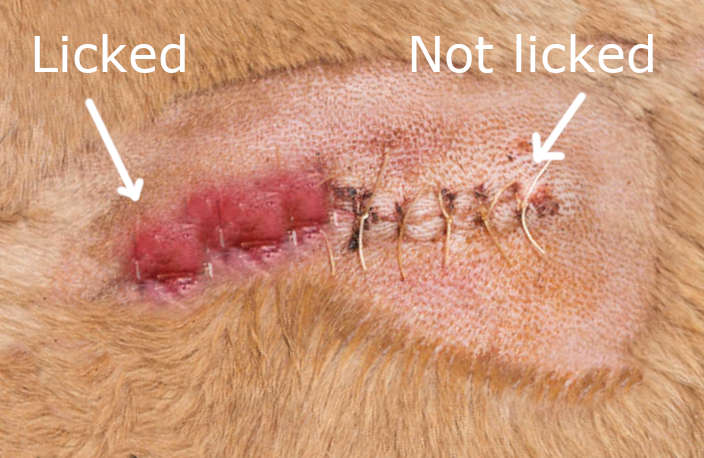
7 signs of incision infections
Common signs of an incision infection in dogs include:
- Swelling: The area around the incision may become swollen and appear inflamed.
- Redness: The skin around the incision may turn red, indicating inflammation.
- Discharge: Pus or other types of fluid may be present around the incision site.
- Odor: The incision may have an unpleasant odor.
- Heat: The area around the incision may feel warm to the touch.
- Pain: The dog may appear to be in pain or uncomfortable when the incision is touched.
- Licking or Chewing: The dog may lick or chew at the incision excessively, which can introduce more bacteria and worsen the infection.
Learn more about the signs of dog wound infections or view more pictures of incision infections.
When to call your veterinarian
If at any point you suspect your dog’s incision is abnormal or infected, you should contact your veterinarian right away. Photos are extremely helpful, and your veterinarian may request you email pictures to their clinic for review.
Are incision infections an emergency?
It is always best to be overly cautious because incisional infections can become disastrous if left unattended. If after hours or on the weekend, it is usually best to follow up with the local emergency clinic for veterinary care.
What do veterinarians do when an incision is infected
If an incisional infection is suspected, your veterinarian will want to take a few steps. They will perform a thorough examination of your dog and ensure they are not feeling unwell. Fevers may be an indicator of systemic illness secondary to an infection.
They will examine the incision closely and may consider collecting a culture of the site. A culture is a swab taken of the incision that is sent to a laboratory to assess for bacterial growth that can indicate an infection is brewing. Once bacteria are grown, susceptibility testing should be performed to determine what antibiotic the bacteria can be treated with. Due to the risk of resistant infections in surgical wounds, culture and susceptibility testing should always be performed.
After examination, your veterinarian will discuss antimicrobial treatment with antibiotics. They may start a broad-spectrum medication until culture results return.
Severe infections may need to be surgically addressed and cleaned. Some incisions will need to be re-opened and left to heal by the formation of granulation tissue. This method is called healing by second intention. Some animals will need drains placed or debridement of necrotic tissue.
The cost associated with these treatments is variable. A sensitivity and culture usually cost around $200-300. Depending on the antimicrobial selection, these are generally inexpensive, but large dogs or those requiring prolonged therapy may need hundreds of dollars of medication.
If revision surgery is needed, the cost may range from several hundred to several thousand of dollars. This is why it is so important to follow post-operative instructions as closely as possible. Some infections are inevitable, but most are caused by inappropriate surgery aftercare.
What causes incisional infections?
The most common cause of infection is self-trauma of the incision by licking and chewing. Secondary to that, dogs develop infections due to the following causes:
Existing skin disease: Dogs that have an existing skin infection or chronic skin disease have unhealthy skin that is more likely to become infected or for infection to spread to a new surgical site.
Poor aseptic technique: Dogs that have surgery performed in an unsterile environment can be more prone to infections.
Dirty wounds: Wounds caused by bites, penetrating trauma, or those that become contaminated by the surrounding environment are more likely to become colonized with bacteria.
Immunocompromised animals: Animals with chronic diseases that impair their immune system are more likely to develop infections.
Chronic antibiotic use: Animals that are on long-term antibiotics or multiple types of antibiotics are at risk for developing multi-drug resistant bacteria. These can cause serious infections.
Chronic corticosteroid use: Animals that are on corticosteroids long-term may have delayed wound healing and be more at risk for wound healing failure and infection.
The picture below is a picture of a dog with skin disease. Skin disease should always be treated first before elective surgery is performed, as these dogs are at increased risk of incisional infections.
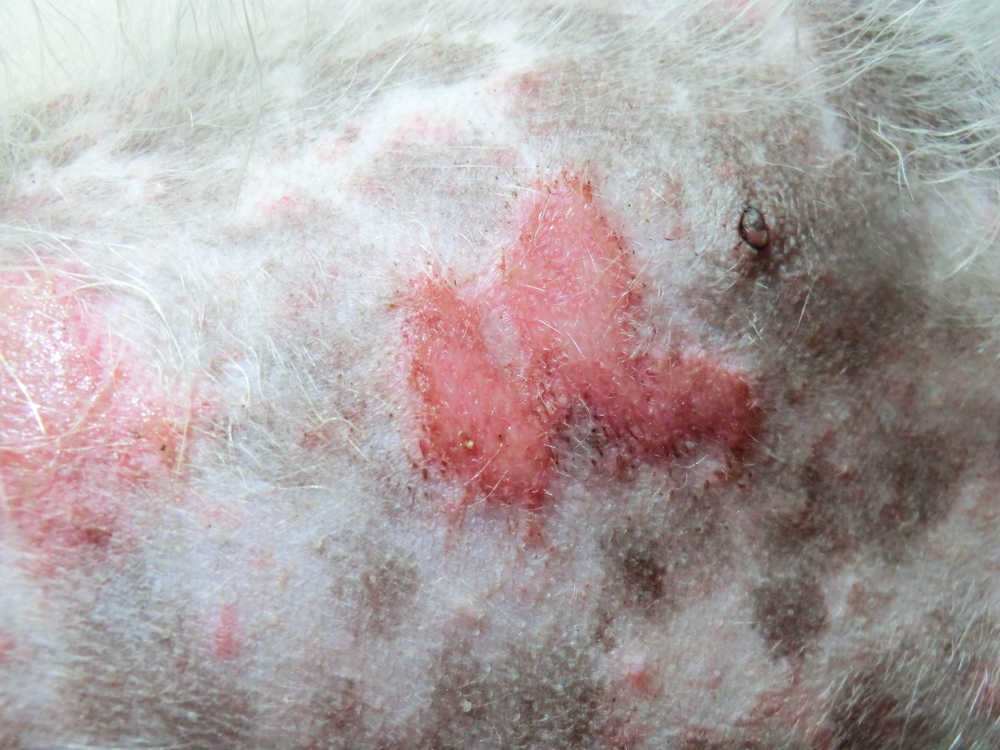
How to prevent incision infections after a surgery
Here are some steps that dog owners can take at home to help prevent infection of an incision on a dog after surgery:
1. Keep the incision site clean and dry: Use a clean, damp cloth to gently clean around the incision site, and avoid getting it wet for at least the first week after surgery.
2. Monitor the incision: Check the incision site regularly for signs of redness, swelling, discharge, or odor. If you notice any of these symptoms, contact your veterinarian right away.
3. Prevent licking and chewing: It is important to prevent your dog from licking or chewing at the incision site, as this can introduce bacteria and worsen the infection. You may need to use an Elizabethan collar (also known as a “cone”) to prevent your dog from accessing the area.
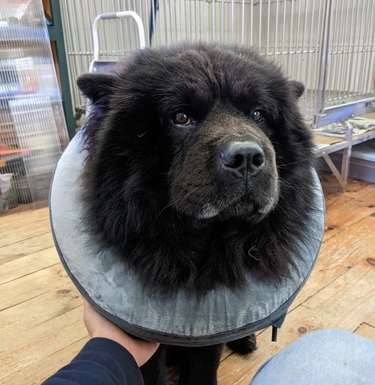
4. Follow post-surgery instructions: Your veterinarian will likely provide you with post-surgical care instructions, including how to administer any medications and how to limit your dog’s activity level. It is important to follow these instructions carefully to help prevent infection.
5. Provide proper nutrition and hydration: A healthy diet and plenty of water can help support your dog’s immune system and promote healing after surgery.
6. Avoid exposing your dog to other animals: During the healing process, it is best to keep your dog away from other animals to reduce the risk of infection.
By following these steps, dog owners can help prevent infection of an incision on their pet after surgery.
Related posts:
Disclaimer: This website's content is not a substitute for veterinary care. Always consult with your veterinarian for healthcare decisions. Read More.

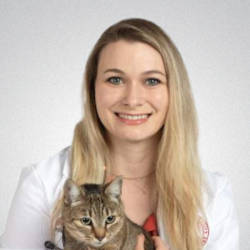
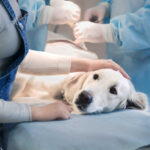
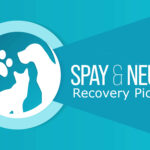
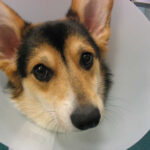
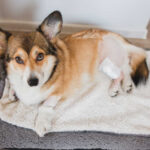
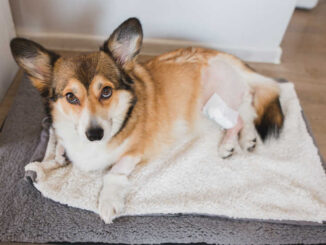
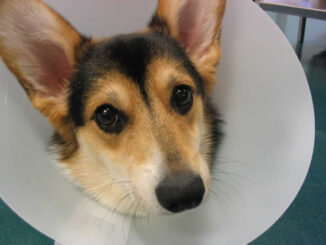
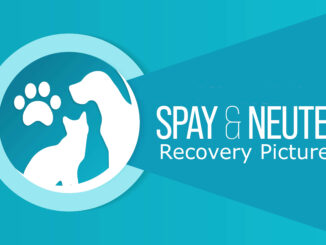
Be the first to comment